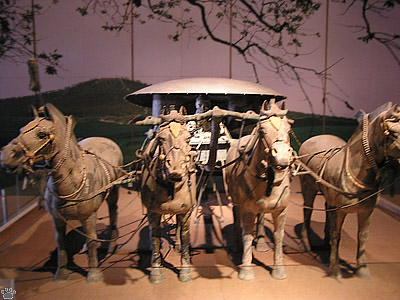
Model chariot, Qing Dynasty (1644-1911). Xian History Museum, Shaanxi.
Part 12. The Heartland
The area between Xian in the west, Shanghai in the east, Wuhan in the south and Anyang in the north is where the Chinese civilization has first evolved. It probably happened 6,000-7,000 years ago.

Terracotta warriors from the tomb of Qin Xi Huang Di, 210 BC. |
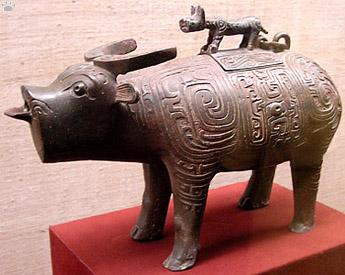
Wine container, c. 1000 BC, Xian History Museum. |
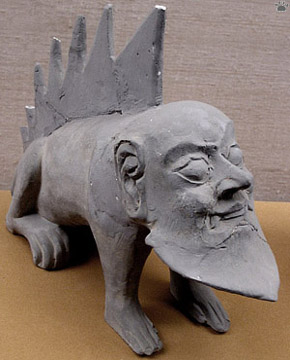
Monster, the Southern Dynasties (AD 420-580), Xian History Museum.
Such monsters are very common in tombs of that period. They probably
served as guardians. |
Almost every provincial capital in China has a provincial museum. All are interesting, but those in the heartland are absolutely fascinating. One of the best, Xian Provincial Museum, was closed during my last visit, but the nearby Xian History Museum also has a very nice collection. |
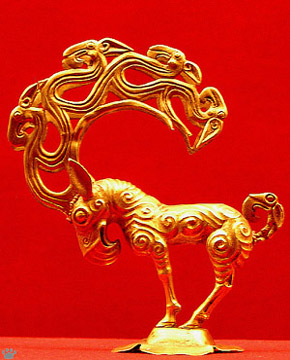
Deer, Han Dynasty (206 BC-AD 220), XHM. I think it's Sarmatian
(Sarmats were a group of Scythians. Scythians spoke an
Indo-European
language; their living descendants are the Ossetians of the Caucasus). |
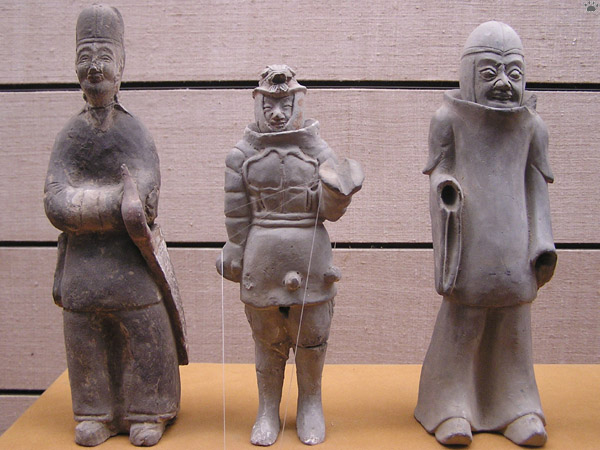
Clay figurines, Northern Wei Period (380-534), Xian History Museum. |
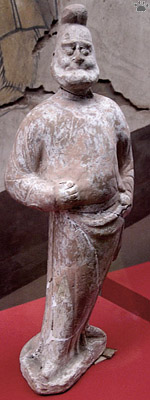
Bureaucrat, Tang Dynasty
(618-907), Xian History Museum. |
Xian was the capital of Qin XI Huang DI (which means simply "the first emperor of Qin Dynasty"), the first ruler of unified China (246-210 BC). A scoundrel, a bloody dictator, an obscurantist and a homicidal maniac, he is increasingly glorified by Chinese movies and textbooks.
His tomb is protected by the famous Terracotta Army (which is very difficult to photograph). The mausoleum itself is said to contain treasures that would make King Tut's tomb look like a municipal grave for homeless. The Chinese Government still refuses to allow it to be excavated, citing a number of stupid reasons. There is a legend saying that the opening of the tomb would release a war spirit. I hope the desire to increase the country's tourism revenue tenfold would eventually prevail over superstition; it would be nice to see the tomb excavated in my lifetime.
There is a bunch of other Imperial tombs in China, especially around Xian, and most of of them still wait to be excavated. Some are believed to contain up to 500 tons of cultural treasures, wonderful works of art and literature. So far, even tombs of small-scale local rulers have produced some wonderful artifacts.
|
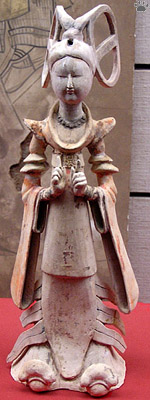
Noble lady, Tang Dynasty,
Xian History Museum. |
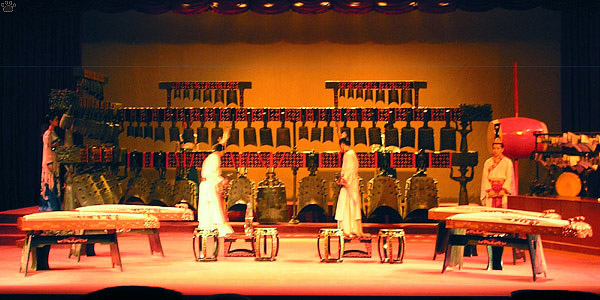
Ancient orchestra, Wuhan Provincial Museum, Hubei. |
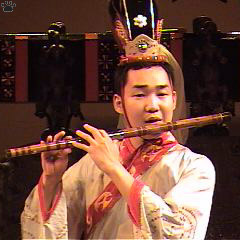
Ancient orchestra, Wuhan Provincial Museum. |
About 30 years ago, a tomb dating back to 433 BC was found in Hubei Province. It belonged to a local ruler, known as Marquis Yi. Among other wonderful artifacts., his tomb contained an orchestra of about 80 instruments. All can now be seen in Wuhan Provincial Museum. In addition, each instrument has been meticulously copied. A few times a day, local musicians play the set of copies for visitors. |
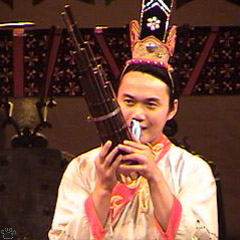
Ancient orchestra, Wuhan Provincial Museum. |
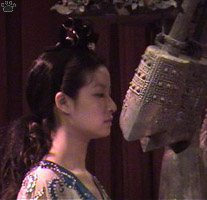 |
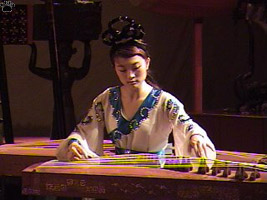 |
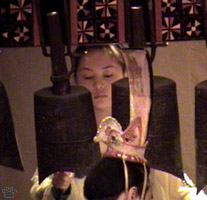 |
| Ancient orchestra, Wuhan Provincial Museum. |
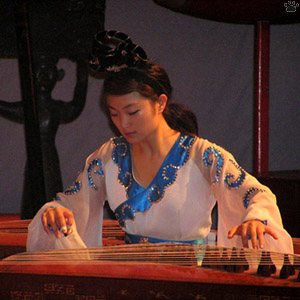
Ancient orchestra, Wuhan Provincial Museum. |
Classical Chinese music sounds great, but they also play relatively modern tunes (such as Mozart). Each bell can produce two different tones, depending on which side you strike. |
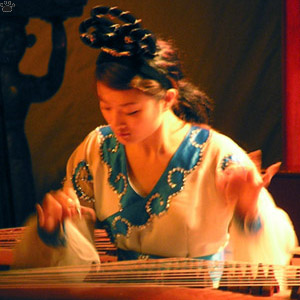
Ancient orchestra, Wuhan Provincial Museum. |
 |
 |
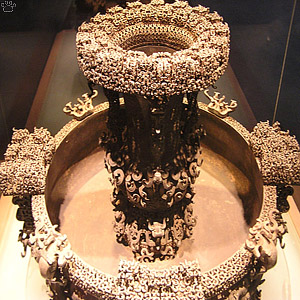 |
| Other artifacts from ancient tombs, Wuhan Provincial Museum. |

Blue rock thrush (Monticola
solitarius), Luoyang Tombs. |
A good place to see some ancient burials in situ is Luoyang Ancient Tombs Museum in Henan Province. It is a complex of dozens of ancient tombs, dating from 200 BC to AD 1200. The burial chambers are now connected by a network of corridors. On a hot summer day, the park above and the cool underground passages are a nice place to spend a couple hours. In some tombs, most artifacts. are still in place. The contents of others have been moved to museums in Zhengzhou, Shanghai, Beijing and abroad. |
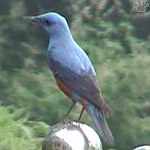
Blue rock thrush,
Luoyang Tombs Museum. |
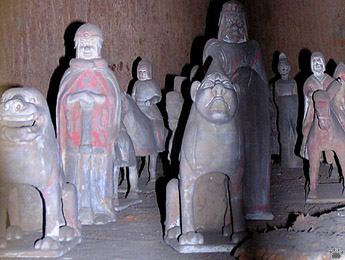
Burial objects, Eastern Han Dynasty (AD 205-220), Luoyang Tombs. |
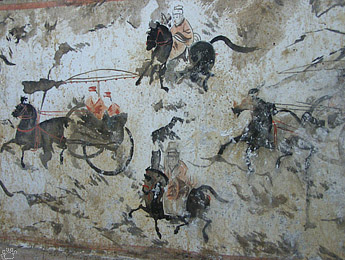
Wall painting, Song Dynasty (AD 960-1260), Luoyang Tombs. |
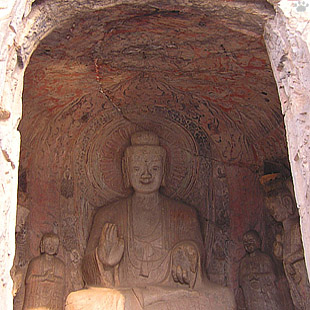
Longmen Caves, Henan. This is one of three great Buddhist cave complexes
of China. |
Longmen Caves near Luoyang date back to N. Wei and Tang Dynasties (AD 494-700). There are hundreds of caves in the area, some very impressive. |

Each little square on the wall to the right contains a tiny Buddha image.
There is 10,000 of them in the cave. Longmen Caves, Henan. |
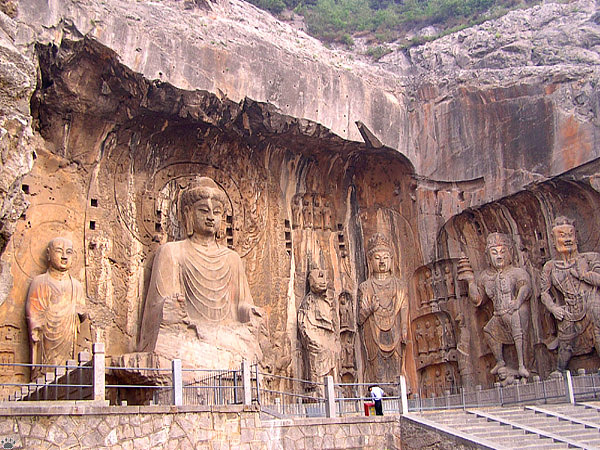
One of Longmen Caves, Henan. |
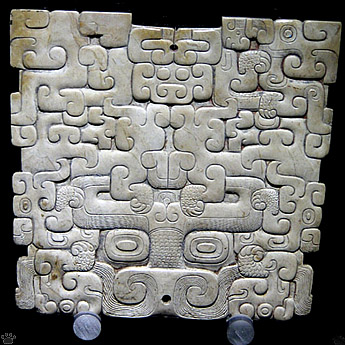
This is not a Preclassic Maya carving. It is a Chinese jade ornament from Spring and
Autumn Period (770-476 BC). Most archeologists say there was no contact between
Ancient Chinese and Mesoamerican civilizations. Well, see for yourself. Zhengzhou. |

Seismograph, made by Zhang Heng in AD 132. If an earthquake occurred, the dragon
facing the epicenter dropped a ball into the mouth of the corresponding toad. In
Europe, the first seismographs appeared 1700 years later. Zhengzhou Museum. |
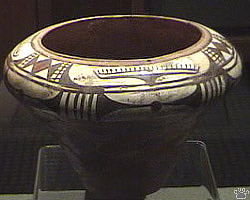
Typical Pueblo Indian pottery? Nope. Neolithic Chinese.
Zhengzhou Museum. |
On every step in those museums, you come across unexpected wonders. Advanced seismographs made 2,140 years ago (upper right), carvings obviously ancestral to Mesoamerican ones (upper left), Stone Age pottery strikingly similar to late pre-Columbian Amerindian styles (left)... lots of surprises. |

Clay figurines, Yuan Dynasty (1271-1368).
Zhengzhou Museum. |
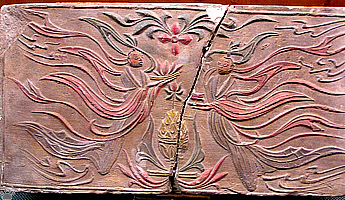
Clay brick, Western Jin Dynasty (AD 267-317), Zhengzhou Museum. |
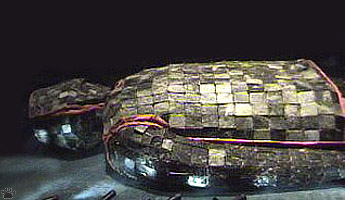
Jade burial suit, Western Zhou Dynasty (1046-711 BC), Zhengzhou Museum. |
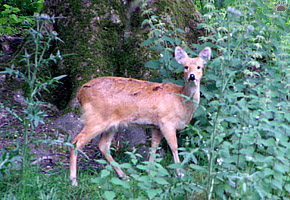
Chinese water deer (Hydropotes inermis), near Xuancheng, Anhoi. |
For a naturalist, this part of China is a nightmare. It's been intensely cultivated for so long that almost no natural vegetation or wildlife remains in the lowlands. |
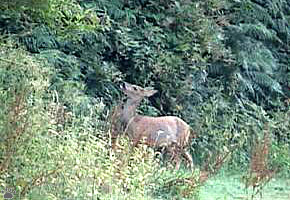
Snow deer (Capreolus pygargus), near Wuhu, Anhoi. |
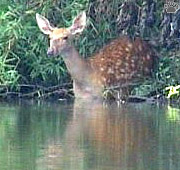 |
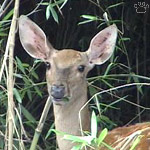 |
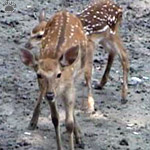 |
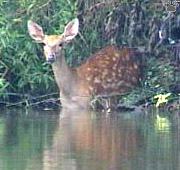 |
| Sika deer (Cervus nippon), Xuancheng Alligator Research Center, Anhoi. |
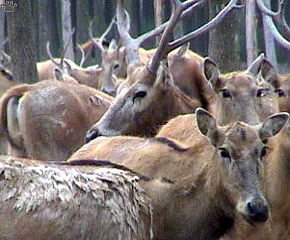
Pere David's deer (Cervus davidianus), Dafeng Milu NR, Jiangsu. |
Pere David's deer went extinct in the wild a long time ago, but a few animals survived in zoos in Britain, and are now being reintroduced into a few tiny Nature reserves in Jiangsu, Hubei and Shandong. |
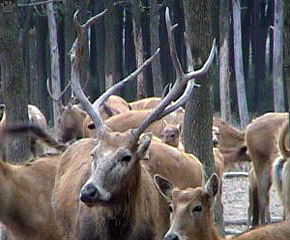
Pere David's deer, Dafeng Milu Nature Reserve, Jiangsu. |
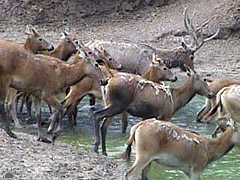 |
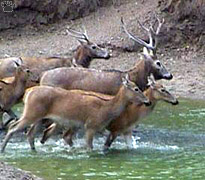 |
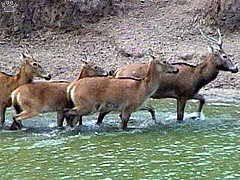 |
| Pere David's deer, Dafeng Milu Nature Reserve, Jiangsu. |
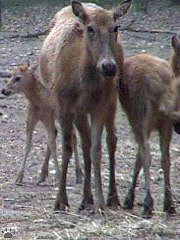
Pere David's deer, Dafeng Milu Nature
Reserve, Jiangsu. |
The lowlands of Eastern China once probably were the richest wildlife habitat in Asia, with lots of wild buffalo, Sumatran rhinos, Asian elephants and tigers. |
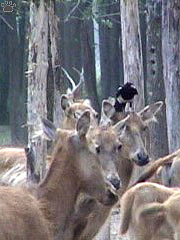
Magpie (Pica pica collecting fir of molting
deer for its nest, DMNR. |
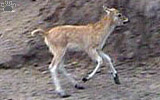 |
| Pere David's deer fawn, DMNR. |
| Now it is a town/rice field mix - a window into the future of our planet as the demographic explosion continues. Well, at least the deer and Chinese alligators aren't extinct yet. |
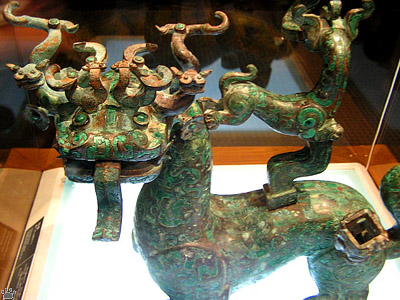
Dragon, Spring and Autumn Period (770-476 BC), Zhengzhou Museum.
Part 13: Water Cities
Back to Part 11
Home
|